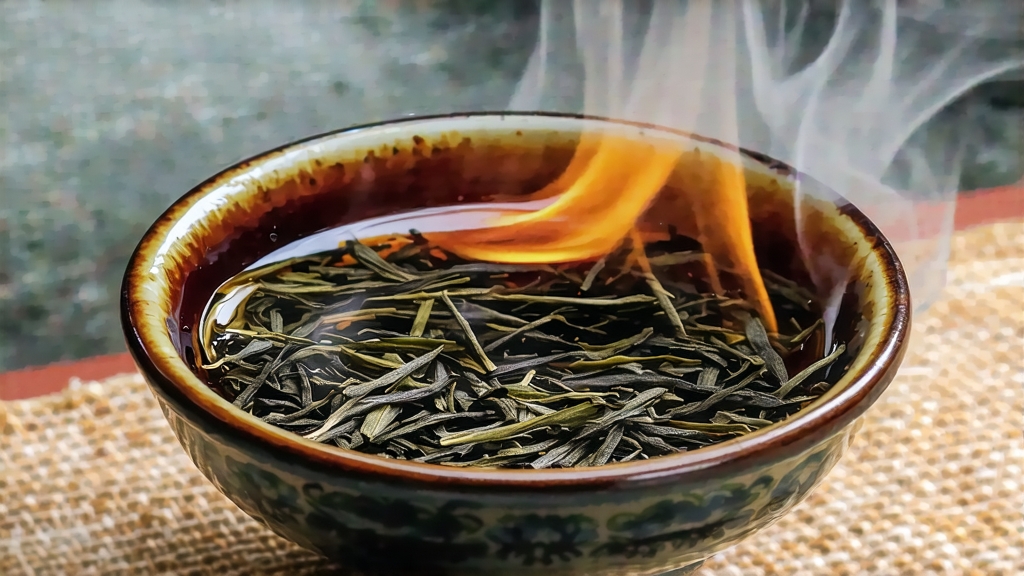
Long before Assam, Ceylon, or Earl Grey entered the global lexicon, the first fully oxidised leaf that the West would later label “black tea” was born among the granite cliffs and cedar-scented mists of the Wuyi massif in China’s north-western Fujian. Locals still call it zhengshan xiaozhong—“small-leaf from the original mountain”—but export invoices two centuries ago anglicised the name into the sing-song syllables we know today: Lapsang Souchong. To understand this tea is to hold a living time-capsule of maritime trade, imperial thirst, and the moment when Chinese ingenuity turned green into black.
History: From Ming Outlaws to London Drawing Rooms
Legend dates the birth of Lapsang Souchong to 1646, when a Qing army column forced tea farmers in Tongmu village to abandon their freshly picked leaves. Returning days later, the farmers found the leaves darkened and decided to salvage them by drying the crop over green pine fires. The accidental smoke infusion proved irresistible to the first Dutch merchants who carried the cargo to Batavia and then to Europe, where it fetched prices higher than silver. By the 1660s Catherine of Braganza was serving it to Charles II; by 1669 the British East India Company listed “Bohea Souchong” among its most profitable lots. The tea financed clipper ships, inspired porcelain designs, and—ironically—seeded the colonial gardens that would later break China’s monopoly.
Terroir: Why Only Tongmu Can Be “Original”
The Wuyi Mountains rise like fortress walls above the Min River, their jagged peaks trapping clouds that drip 220 fog-shrouded days a year. In the 67 km² core zone known as “zhengshan” (original mountain) the soil is a skeletal, mineral-rich laterite strewn with weathered granite. Day-night temperature swings of 10 °C slow leaf growth, concentrating amino acids and volatile aromatics. Crucially, the micro-biome includes native Masson pines (Pinus massoniana) whose resin contains α-pinene and longifolene—compounds that will later bond with tea polyphenols during smoking. Chinese law now grants Tongmu Protected Geographic Indication status; leaves picked even a kilometre outside the canyon fetch half the price.
Cultivars: Three Clones That Smoke Differently
- Cai Cha (mixed small-leaf): the traditional bush, hardy at 600–900 m, gives pine-honey sweetness and a peppery finish.
- Zhenghe Da Bai: a larger-leaf cultivar transplanted from neighbouring Zhenghe county; yields a creamier body but needs longer withering to avoid grassiness.
- Jiu Qu Mei Mei (“curly plum”): a 1950s clonal selection whose twisted leaves trap more smoke, popular in Russian markets that favour bold tar notes.
Craft: The Eight Stages of Smoke and Fire
Picking: Only the tender two-and-a-half leaves and a bud are taken before Grain Rain (late April). Standard: 30 000 shoots yield 1 kg finished tea.
Withering: Bamboo racks inside wooden lofts receive the leaves for 6–8 h; mountain breezes reduce moisture from 78 % to 64 %. No sun-withering is allowed—the goal is to preserve green chlorophyll until oxidation can be controlled.
Rolling: 35 min of light tumbling under 8 kg pressure breaks cell walls without shredding the leaf; enzymes begin converting catechins into theaflavins.
Oxidation: Leaves rest 3–4 h in cedar-lined boxes kept at 24 °C and 85 % RH. Masters “listen” for the tell-tale apple-like aroma signalling 80 % oxidation—any darker and smoke will taste acrid.
Pan-firing: A 220 °C wok pass lasting 90 s halts oxidation, fixing the coppery colour and creating a caramelised crust that later absorbs smoke evenly.
Smoking: The signature step. Pine logs 30 cm long are stacked in an underground pit 1.5 m deep; a brick flue channels heat and smoke into a second chamber where tea rests on sieves 2 m above the embers. Temperature is kept below 80 °C to avoid scorching; smoking lasts 6–8